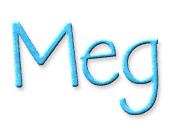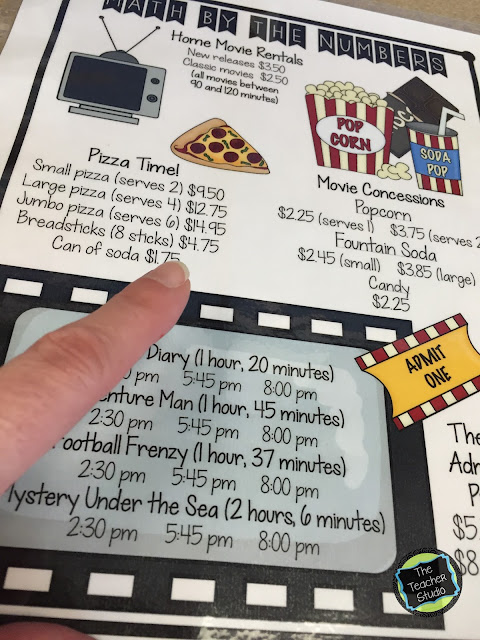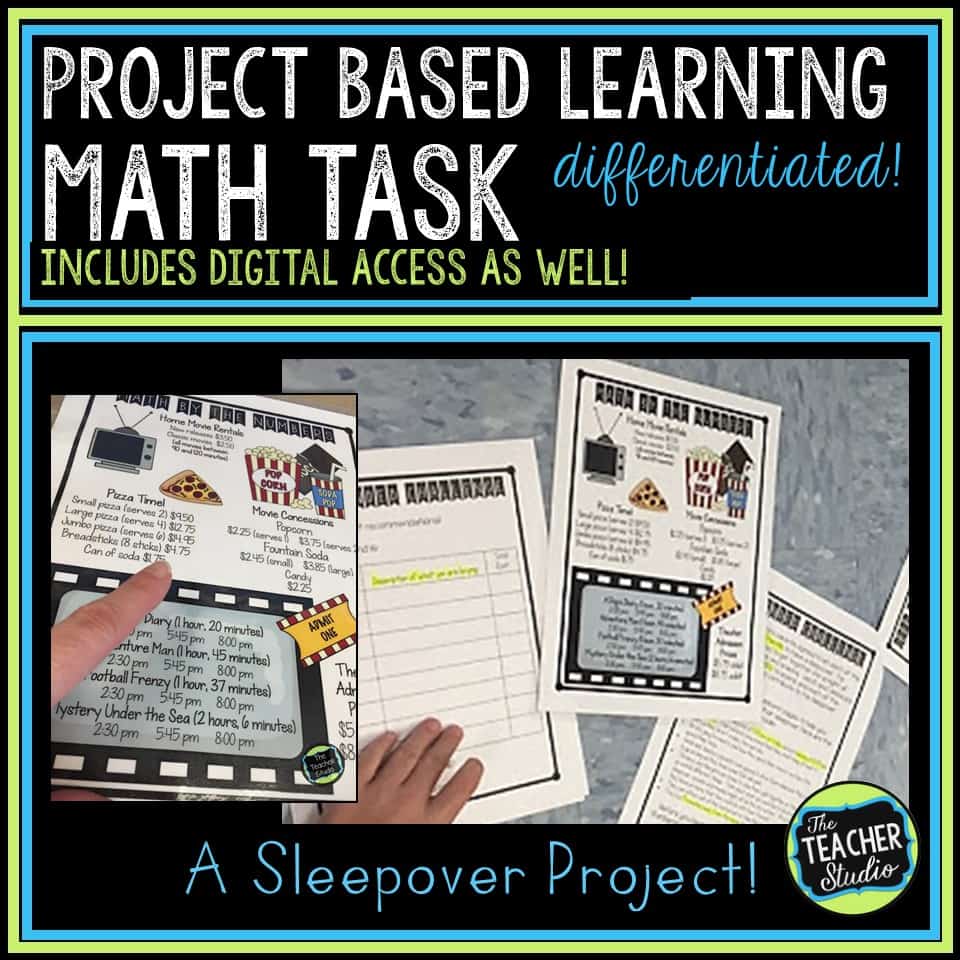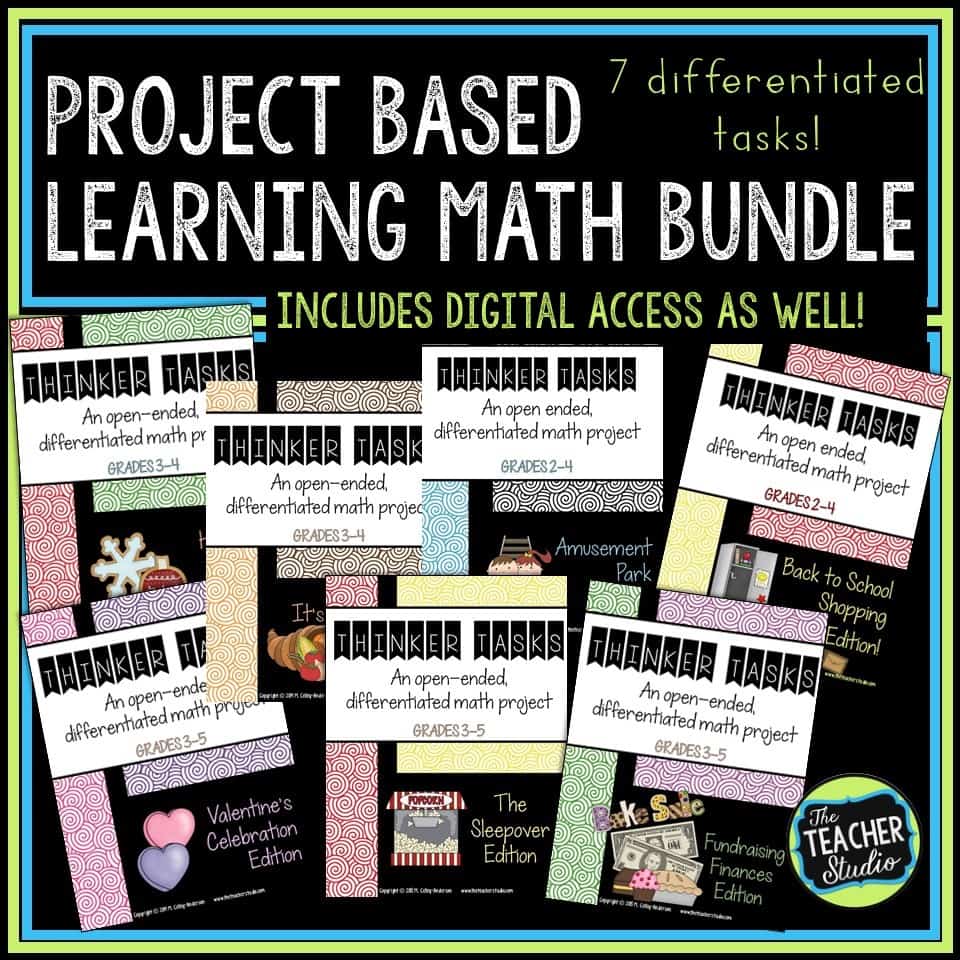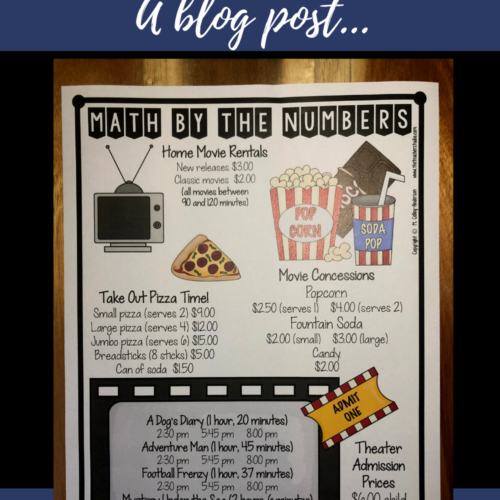
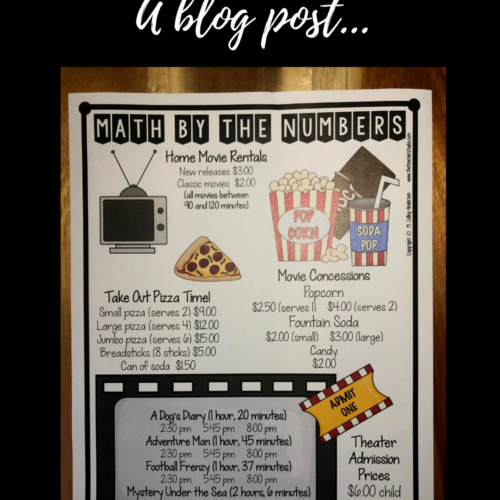
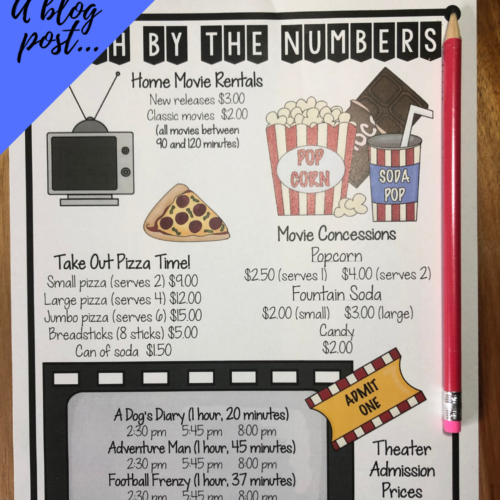
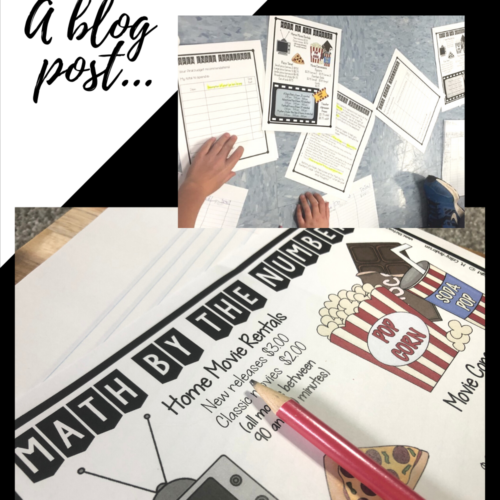
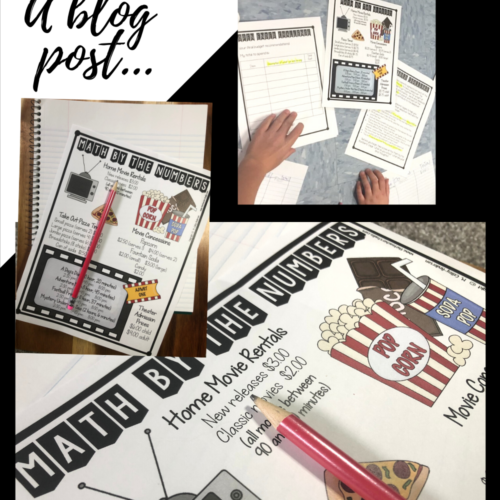
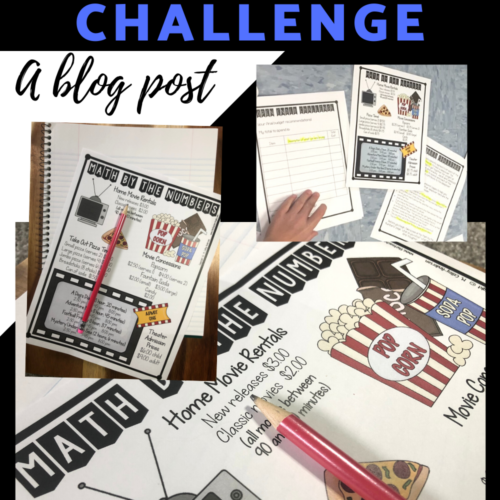
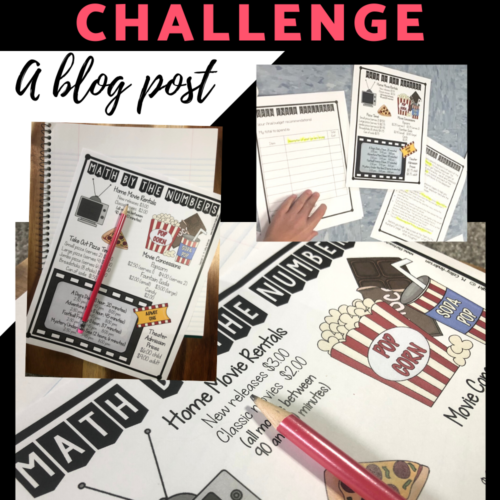
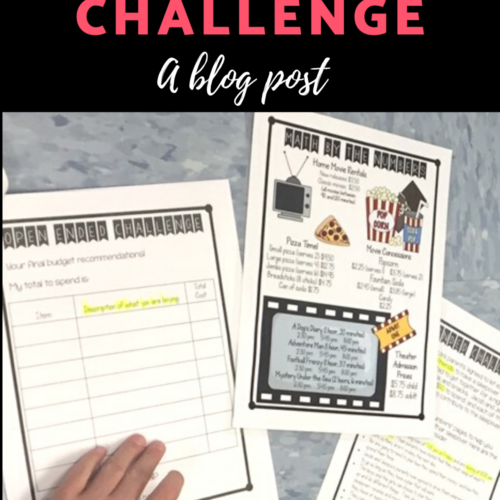

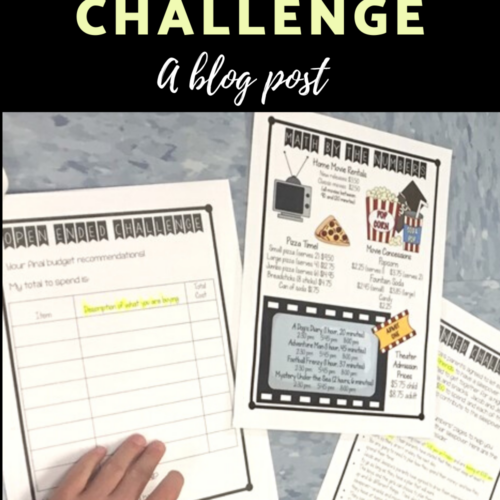
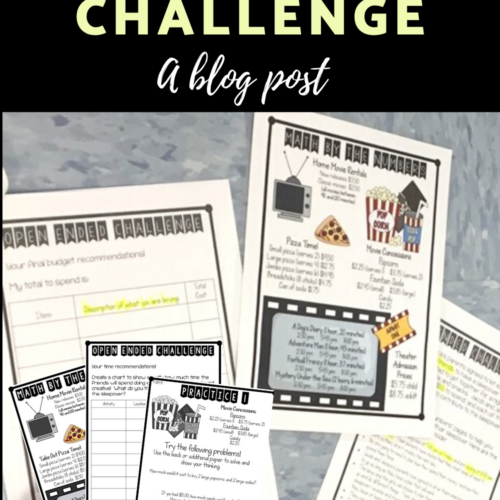
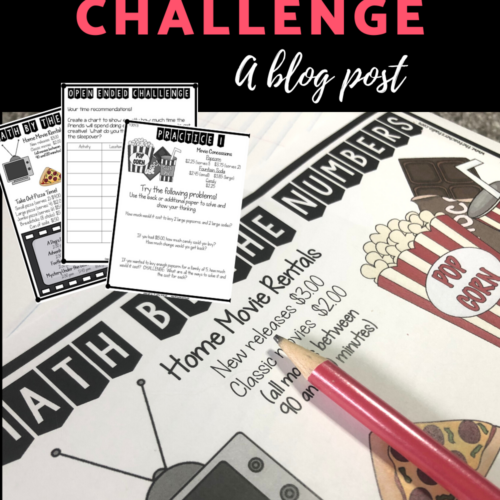
Open Ended Math Challenges
As you know if you have followed me for any length of time, I love to have my students work collaboratively on “challenging” tasks…and because it is testing season in my room, I like to give my students as much interaction with each other in our non-testing hours as possible! You may have seen (or even tried) some of my “Thinker Task” open ended problems…so they involved a real-life scenario where students work alone or collaboratively to find a solution, organize their work, explain their thinking…blah blah blah.
I was getting ready to introduce one of them to my class when I accidentally turned on my document camera with my stack of papers under it.
My students went nuts.
“Do we get to plan a menu?”
“How many movies can they see?”
“How much money can we spend?”
(Remember, they haven’t seen the scenario yet!)
A little light bulb went on in my very tired brain, so I told them that THEY had to write the questions! They seemed less than impressed with this idea…but I sent them to get their notebooks and asked them to try writing some questions using this real world data. Some did a decent jobs…others struggled with how to get started. I love the idea of this “backward thinking”–making THEM think of the math. I’ve done it quite a bit in the past…check out THIS POST and THIS POST for some more examples. This is TOTALLY something easy you can do any time you see numbers in the real world!
So What Next?
After a few minutes, I brought them back up to the front and we studied our “Math by the Numbers” sheet a little more closely. We talked about the different types of numbers found on the page. We talked about the types of QUESTIONS we could ask (“how many more…” problems, multiplication problems, comparing problems, elapsed time problems) and I heard a lot more “ohhhhhh” murmurs. So many had started with rather simplistic questions like:
“How much would 2 small pizzas cost?”
and started coming up with questions like:
“If I had to be my friend’s house by 6 pm and it is now noon, which movies do I have time to see?” and other more outside the box ways to look at this information. I saw questions that had more than one answer begin to appear like, “What are all the different ways I could spend $20 at the restaurant?” and then I knew we were ready to tackle the ACTUAL task that I had created! Students did ask if they could keep writing their own questions and solving them (ummmm…you want to do extra math? SURE!)
Getting better!
The Following Day…
So…the next day I gave the students the actual scenario to work on. I asked them to work in teams of 2 or 3 to dig in and start TALKING about what some of the possible ways to tackle it would be. Because we had already studied the data sheet, they had some great background and this process went quite smoothly. I didn’t want them to start just solving the problem without thought–so I made them take some time to think. The scenario asks them to make a bunch of decisions and eventually come up with both a budget AND a time plan for the time frame of the sleepover. Students had to decide if the brother and sister and their friends would do everything together or separately–and how they would allocate their time and money. OH the discussions and negotiations I heard! After some planning, they got to work in their notebooks.
See what they did!
…and although they aren’t finished with the first part (this will go on for the next week or so for my fast finishers), they are well on their way to planning a superb sleepover!
I dare you to give it a try–snap a photo at the grocery store or bring in ads from the newspaper–ask students to think backwards and write their OWN problem and see how it deepens their understanding! In a nutshell…make your STUDENTS work hard than you do!
Now These Tasks Are Print AND Digital!
The Sleepover Project used in this post is listed here, as is the bundle that includes 7 of these tasks. All of them have both print options and digital components for maximum flexibility. See what you think!
